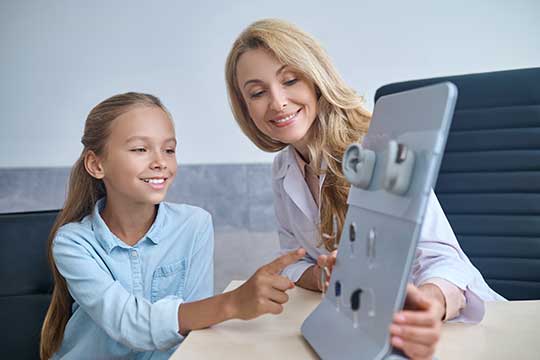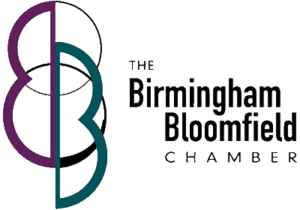What Are the Steps to Getting Hearing Aids?

Imagine your hearing was almost perfect.
Now discover the steps to make it happen.
Okay, your hearing isn’t perfect. What do you do? The first step is to find out what’s going on. It could be just wax buildup, or it could be hearing loss. The place to start is with a hearing test. This will determine the strength and type of hearing aid most likely to meet your needs. We’ll also get some basic measurements and a sense of your preferences. From there, we will program and fit the hearing aids for your comfort. To get started, schedule a hearing test at Hinderliter Hearing Services, conveniently located in Birmingham, MI, and serving Clawson, Troy, and Bloomfield Hills.
What’s included in your hearing aid assessment?
Hearing aids work best when they are tailored for the individual. As a result, we’ll conduct a comprehensive assessment to determine:
- Your past experiences with hearing aids: We will discuss your past devices, including what you may have liked or disliked about them.
- Your personal needs: Your hearing aids need to fit your lifestyle. Individuals who are active, for example, may require hearing aids that are more water-resistant. Others may want to minimize the visibility of their hearing aids, or may want hearing aids with advanced features such as fall detection. Your hearing specialist will be able to help you determine the best possible hearing aids for your situation and your lifestyle needs.
- Your audiogram: Of course, those lifestyle needs will be balanced against what your audiogram has to say. An audiogram is a graph you receive after undergoing a hearing test. In many cases, your audiogram will be the driving force behind the style you end up with. That’s because the more pronounced your hearing loss, the more processing power you need to compensate.
- Your preferences: Do you want hearing aids that are packed with technology? Or is it more important to have discreet hearing aids? Would you prefer to charge your hearing aids every night or replace the batteries once every few months? Do you want your hearing aids to work with your cell phone? You and your hearing specialist will discuss your preferences and how they might impact which hearing aid device is best for you.
What measurements matter for your hearing aids?
Hearing aids need to be the right size so they don’t move around in your ear canal and create feedback. We’ll take detailed measurements, and in some cases, create custom molds to help create the best fit possible.
The secret to optimizing your hearing aids? Hint: we can program them for you.
The goal of programming is to ensure the hearing aid output is calibrated for your level of hearing loss. Programming your hearing aids will take into account several factors:
- The type and severity of your hearing loss: The volume of your hearing aids will be calibrated to your specific needs based on your audiogram. Hearing aids have the ability to amplify different frequencies of sound at different levels. So if you have less ability to hear high-frequency sounds, your hearing aids will be able to amplify those frequencies with more intensity. This creates a more balanced sound overall.
- Where you plan to wear your hearing aids: Are you planning on wearing your hearing aids to the movies or your favorite restaurant? Do you mostly use your hearing aids in crowded rooms? Your hearing aids can be calibrated to work best in specific environments. Smart hearing aids can even be programmed to manually adjust levels depending on the environment you’re in.
This programming may be performed before you arrive or while you’re in the office. In either case, we will take steps to ensure your hearing aids are performing properly before you leave.
What should you know about your hearing aid fitting?
At your hearing aid fitting, we’ll go over:
- The parts of your hearing aids
- Inserting them in the ear correctly
- How to clean them, insert batteries, and care for them
- How to link them to your smartphone
- Adjusting the volume and advanced settings
We may also conduct some diagnostic tests to make sure they are working properly and make any necessary adjustments.
What’s the gold standard for hearing measurement (and why do we use it)?
One of the tools we use to make sure your hearing aids are working properly is called Probe Microphone Measurement. It’s known as the gold standard diagnostic of hearing aid calibration. During this test, a small microphone will be placed in your ear canal along with your hearing aid.
The microphone measures the real-time output from the hearing aids to ensure what you’re hearing is what you need to hear. This diagnostic allows your hearing specialist to know that your hearing aids are amplifying the correct frequencies at the right levels.
We can then continue to make adjustments if necessary, ensuring that your hearing aids will effectively compensate for your hearing loss.
How long does it take to get used to your new or modified hearing aids?
For anyone who wants to get more out of life and improve their hearing, the period of adjustment is just like any other new habit. They take a little getting used to, the feel and the sound that is.
The most common problem people have with new hearing aids is they get them, try them, and when they don’t seem perfect right out of the box, they take them out and leave them on their nightstand for a month. Obviously, the key to getting used to your new hearing aids is to use them as much as possible.
It’d be great if you could pop your new hearing aids in, and instantly everything sounded perfect, and you couldn’t feel them at all. But that’s often not what happens at first. It’s what will happen if you give them a week or two.
Just to start, if they are new to you or you are leveling up, your new hearing aids will require a bit of an adjustment period. This has to do with changes to the hearing center of your brain. As your hearing wanes, your brain starts to use that processing power for other activities.
So when you suddenly have all this auditory information again, your brain takes a while to adjust. You may feel like the sound output is too loud at first or get tired easily. It’s important to continue wearing your hearing aids through this transitionary period.
There are a number of activities that can help you adjust to hearing aids faster, such as:
- Reading a book out loud to yourself (or following along with an audiobook).
- Watching television or movies with subtitles enabled.
- Having conversations (both in a quiet setting and with background noise).
- Playing word games.
The idea is to keep your mind and your ears engaged and communicating with one another. It’s absolutely essential that you keep using your hearing aids as you adjust to them.
How do you know when your hearing aid is a good fit?
Ever have a pair of shoes that fit perfectly? Ones that are so comfortable you barely notice they are on, and when you walk, you practically float over the ground. Hearing aids, if they are a good fit, can be the same. You’ll barely notice you’re wearing them, and they’ll make your day better in so many ways.
A good hearing aid “fit” means your hearing aid is more likely to work properly. And if your hearing aids are more likely to work, you’re more likely to keep them in–and enjoy the long-term benefits of your hearing loss treatment.
Here are 3 things to look for:
- In the current day of online sales, it’s easy to buy, well, almost anything. But buying online can be risky. You’re getting a medical device without in-depth testing, which means you stand a good risk of ordering the wrong hearing aid or one that won’t solve the hearing problems you have.
- If you get hearing aids that don’t fit well and insert them in your ears, it could easily cause problems. You probably already know to avoid putting a cotton swab or anything else in your ear, including hard plastic objects. So why would you insert a poorly-fit hearing aid when you know it could do damage?
- Whether you wear and benefit from your hearing aids has a lot to do with comfort. If your hearing aids don’t fit, they’ll be left on your bedside table and will be a total waste of money. Best to get professional advice and help with the right pair and the right fit.
Once you have a new pair of hearing aids, in the first few months, take notes on the types of hearing environments you’re still struggling to hear. In our follow-up appointment, we can adjust your settings to be more comfortable.
Good hearing aids can make all the difference even more so when the fit is calibrated for your ears.

